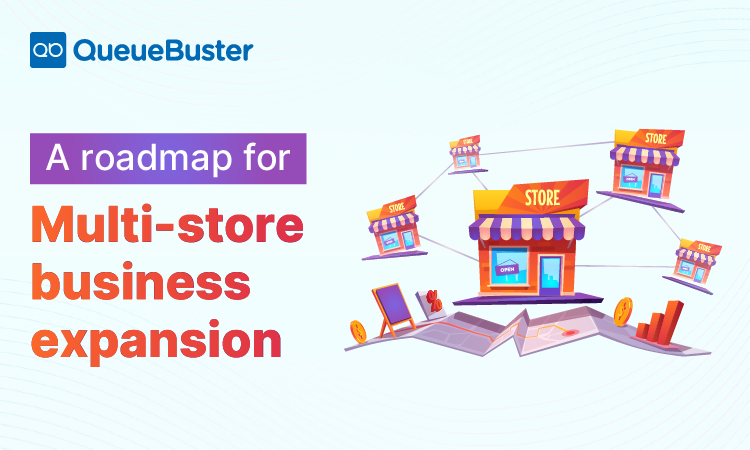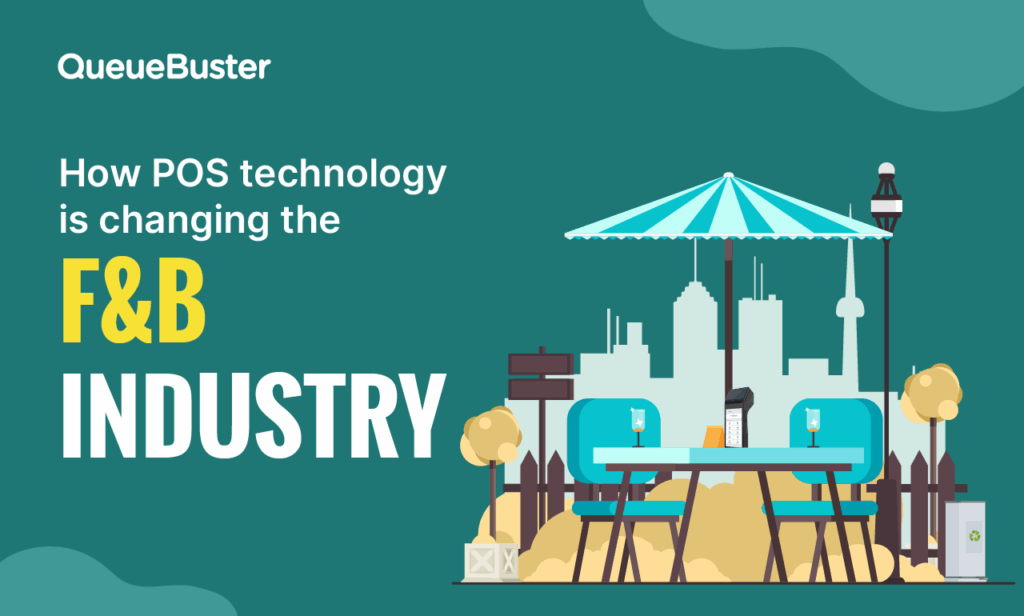
A Roadmap for Multi-Store Business Expansion
A Roadmap for Multi-Store Business Expansion

By QueueBuster Team Published: November 13th, 2023
Expanding a business to multiple stores can be a daunting task but it doesn’t have to be. With the right strategy and careful planning, one can successfully achieve this objective. This article is meant to guide business owners in each step of their enterprise expansion endeavors. From goal setting to deciding store locations, this article will guide the readers through all the key considerations to increase their number of brick-and-mortar outlets.
Define Your Business Goals
For individual business owners, goal setting can start with a self-talk about forming realistic expectations and deriving a structured plan of primary objectives. These objectives need to be a good balance of an individual owner’s desires and capacities. One needs to ask oneself how much one wants to expand and what one hopes to achieve. Is it only to increase profits? Or it is to reach a wider audience to survive or sustain in a highly-competitive market. Be it financial or otherwise, knowing one’s immediate objectives is the first step to move forward.
Business expansion plans can involve product diversification. Planning of new offerings needs to be considered with respect to competition in target markets and profitability. Also, instead of creating a whole new product, one can focus on enhancing certain aspects of their offers to stand out from the competition. Whatever a business owner decides, a clear vision for their brand always helps them inform every aspect of their expansion process.
Why We Need Market Research for Multi-Store Business Expansion?
Before embarking on expansion, thorough research of target markets is essential. One can start by examining the demographic details of those areas. After a substantial understanding of the consumer base, one needs to seek the answers to the questions: Would the products capture the interest of the potential buyers? Who are the competitors? Are there any additional factors that could affect one’s business success such as transportation or local laws?
Competition analysis is an important part of market research. One needs to have an in-depth understanding of factors like, what kind of businesses are they, what they offer that is different, and how their prices and customer services are. Based on these findings, one needs to prepare and position their products in the competition.
Researching the local economy is also important. Questions like, if there is any trend that could affect the business, are there certain times of a year that would be more beneficial for sales, etc. need to find answers. These macroeconomic research and reports from industry experts help to narrow down the expansion objectives.
The valuable insights gained from market research will provide business owners with the necessary confidence to proceed with their decision-making process.
Based on research findings, a concrete plan gets created. The budget, timeline, resources, and logistics are thus put into the paper.
Error: Contact form not found.
Creating a Business Plan
A business plan is a blueprint of a detailed course of action based on goals and research-based insights. It is a written document that outlines a company’s vision and objectives, as well as a detailed road map to achieve them. It includes the budget and potential risks or challenges.
A Business Plan Should Include:
• An executive summary – This should outline the purpose of the business and give a brief overview of the products offered.
• Market analysis – A detail of the current market for the product and an explanation of how one’s business fits into this market. Also, the target consumer base, their needs, and how the product can meet those needs are described here.
• Financial projections – Cost estimates associated with opening each store and expected income from each store location.
• Operating plan – Business operation outlines, including staff and resources required to run the stores.
• Marketing plan – Detailed designs of promotional campaigns, including which online and offline platforms would be suitable and how it will be done.
Finalizing a business plan puts a business owner in a more comfortable position in their expansion endeavor. Now they can easily cover the remaining ground, such as choosing store locations.
Store Location
To choose the exact location for one’s business outlet, it is important to consider factors such as availability of potential customers, cost, accessibility, competition and zoning laws. A recce is essential to understand the suitability of a place.
Before reaching a final decision, one needs to research if the location is easily accessible to potential customers and whether there is enough demand to sustain a new store.
It is also important to factor in the cost of renting or buying a store area. While it may be tempting to choose the most affordable option, long-term concerns need to be factored in.
Competition can be both a good and bad thing. On one hand, having other stores close by can draw customers away from one’s store, on the other hand, customers may be more likely to visit an area with multiple shops instead of one lonely store.
Finally, and most importantly, the local zoning laws will determine if the location is a feasible option or not. Any kind of restriction on a business type and activities needs to be heeded well in advance.
Promotion of New Online Stores
In the present times, one of the best and easiest ways to promote new online stores is by leveraging digital marketing and social media platforms. These promotional activities include creating a website for the business, optimizing it for search engine rankings, running paid advertisements on social media platforms like Facebook and Instagram, etc. One can also post SEO content such as blogs, listicles, and videos on Medium, Pocket, Facebook, Instagram, Youtube, Vimeo, etc. to draw attention to one’s business offerings.
How To Create An Online Catalogue For Retail Businesses And Sell Products Online
Time-tested offline marketing strategies are also needed to be equally used for promotional activities. Putting up flyers in strategic locations, utilizing radio and television commercials, and partnering up with local businesses can spread the word effectively.
Error: Contact form not found.
Last But Not Least
When one is all set to start operating their businesses in new set-ups, the best of the new-age technologies needs to be chosen and optimally utilized. An affordable and user-friendly business operations software. QueueBuster is currently among the top favorites of a wide variety of commercial operators.
Along with managing and optimizing the customer queueing process, the QueueBuster POS Billing Software lication takes the best care of product catalog management, customer invoice generation, inventory management, payments, promotions, discounts, data management, sales report generation, customer relationship, and much more.
The use of this software will do complete justice to the money and hard work invested in setting up new stores. QueueBuster will be instrumental in the smooth functioning of all the new set-ups.
To remove doubts and concerns, a free demo request, Talk With An Expert, and free download options can be availed from here.
Popular Posts

Benefits of Omnichannel Commerce in UAE Retail
The UAE has become one of the most dynamic markets for digital […]

How POS Technology is Changing the F&B Industry
The Food & Beverage (F&B) industry has always been fast-paced, customer-driven, and […]